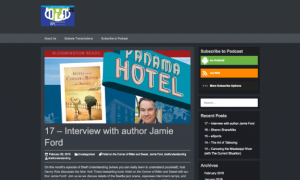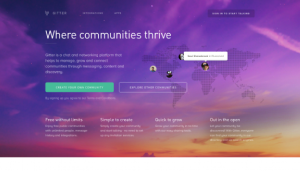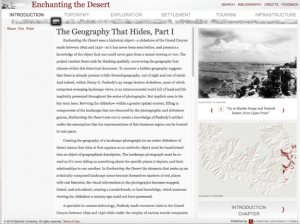 |
March 23, 2018 Volume 24, Number 12 |
Research and Education |
General Interest |
Network Tools |
Revisited |
In the News |
Research and EducationBack to Top | |
 |
|
 |
|
 |
|
 |
|
 |
|
 |
|
 |
|
 |
|
General InterestBack to Top | |
 |
|
 |
|
 |
|
 |
|
 |
|
 |
|
 |
|
 |
|
Network ToolsBack to Top | |
 |
|
 |
|
RevisitedBack to Top | |
 |
|
In the NewsBack to Top | |
Textile Artist Katherine Westphal Dies at 99 | |
|
Katherine Westphal, Fiber Art Pioneer, Dies at 99 Katherine Westphal, Creator of Unusual Textile Art, Dies at 99 Browngrotta Arts: Katherine Westphal Artist and professor: oral history transcript / 1984 Wearable Art from California: Katherine Westphal TextileArtist.org On March 13, textile artist Katherine Westphal died at the age of 99 at her home in Berkeley, California. From the 1960s to the 1990s, Westphal made a name for herself for her unique quilts, baskets, kimonos, and dresses, which incorporated a variety of techniques including embroidery, weaving, heat transfer, and photocopying. Through these distinctive works, Westphal was a key figure in the twentieth century American Crafts Movement and the Wearable Art Movement, respectively. Westphal was born in Los Angeles, California on January 2, 1919. After she graduated from high school, she initially attended Los Angeles City College to study commercial art, but soon transferred to the University of California-Berkeley. There, she earned both a bachelor's and a master's degree in painting. Westphal briefly held teaching positions at the University of Wyoming and the University of Washington before meeting her husband, artist Ed Rossbach. In 1950, Rossbach received a teaching position UC-Berkeley (where Westphal was unable to join the faculty due to nepotism rules), and the couple moved back to Westphal's home state of California. Westphal then spent eight years designing textiles for the firm Perspectives, Inc., before taking a teaching position at UC-Davis. During this time, Westphal also began creating some of her signature artworks, including "The puzzle of the Floating World #2," (1976) and "Chuto-Haupa," (1983). In a 1984 oral history interview for UC-Berkeley, Westphal said, "I want to become a link in that long line of human activity -- the patterning of cloth on any surface available." [MMB] The first link takes readers to an obituary for Katherine Westphal by Glenn Adamson of Hyperallergic. The second link takes readers to Richard Sandomir's obituary for Westphal in The New York Times. Those interested in exploring Westphal's work may do so through the website of her gallery, Browngrotta Studio, available via the third link. The fourth link takes readers to the transcript of the aforementioned 1984 oral history interview with Westphal, available courtesy of UC-Berkeley's Bancroft Library. The fifth link takes readers to a 1986 video profile of Westphal for a UC-Davis series on wearable art. The profile incorporates an extensive interview with Westphal about her work. Finally, readers who are interested in textile art may want to check out the last link. Textileartist.org is an "online resource and community for artists working with textile techniques as well as textile art enthusiasts." | |





